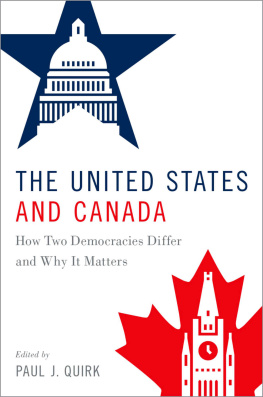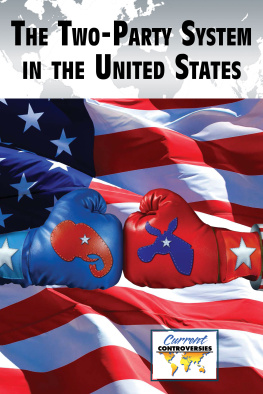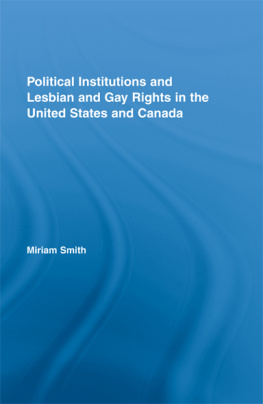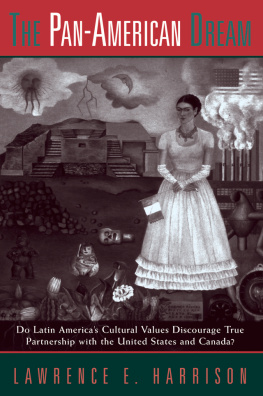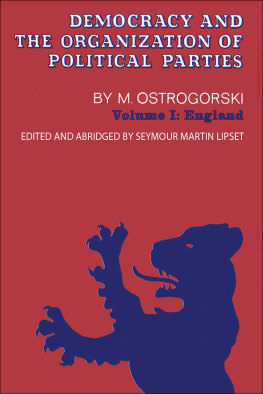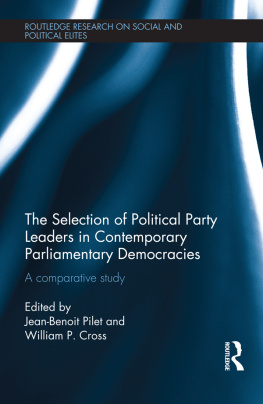The United States and Canada
The United States and Canada
How Two Democracies Differ and Why It Matters
EDITED BY PAUL J. QUIRK


Oxford University Press is a department of the University of Oxford. It furthers the Universitys objective of excellence in research, scholarship, and education by publishing worldwide. Oxford is a registered trade mark of Oxford University Press in the UK and certain other countries.
Published in the United States of America by Oxford University Press
198 Madison Avenue, New York, NY 10016, United States of America.
Oxford University Press 2019
All rights reserved. No part of this publication may be reproduced, stored in a retrieval system, or transmitted, in any form or by any means, without the prior permission in writing of Oxford University Press, or as expressly permitted by law, by license, or under terms agreed with the appropriate reproduction rights organization. Inquiries concerning reproduction outside the scope of the above should be sent to the Rights Department, Oxford University Press, at the address above.
You must not circulate this work in any other form and you must impose this same condition on any acquirer.
CIP data is on file at the Library of Congress
ISBN 9780190870836 (pbk.)
ISBN 9780190870829 (hbk.)
ISBN 9780190870850 (epub.)
Contents
Paul J. Quirk
Russell J. Dalton
Andr Blais, Shaun Bowler, and Bernard Grofman
Jonathan Malloy and Paul J. Quirk
John R. McAndrews, Bert A. Rockman, and Colin Campbell
Richard Simeon and Beryl A. Radin
William Keech and William Scarth
Kathryn Harrison
Gary Mucciaroni and Francesca Scala
Antonia Maioni and Theodore R. Marmor
Irene Bloemraad and Doris Marie Provine
Keith Banting, Jack Nagel, Chelsea Schafer, and Daniel Westlake
Paul J. Quirk
There are at least three kinds of motivation for comparing the political systems of the United States and Canada. For many residents of either country, such interest arises largely from an impulse to make invidious distinctions. When President George W. Bush was reelected in 2004 despite the increasingly apparent disaster of the Iraq War, some outraged American liberals pronounced themselves ready to pick up and move to Canada. (They assumed that Canadian immigration policies would accommodate their umbrage.) The arrival of Prime Minister Stephen Harpers Conservative government in 2006 and the election of Democratic President Barack Obama in 2008 turned the tables. American conservatives pointed to Harpers Canada as a haven from Obama-style assaults on the taxpayers and economic freedom. On the other hand, left-leaning Canadians praised the U.S. for openness and effective limits on executive power, contrasted with the sometimes authoritarian tendencies of the Harper government. In the current era, the invidious comparisons center on distress in both countries about U.S. President Donald Trump, his chaotic policymaking, multiple scandals, and the resulting challenges to the rule of law. To the satisfaction of many Canadians, Prime Minister Justin Trudeau has had an image on the world stage as Trumps opposite. At the same time, many Canadians wonder whether a Trump-style populist nationalist could rise to power in Canada.
A second kind of interest, setting aside the invidious distinctions, is simply to understand more about how each country works, and as our subtitle puts it, How Two Democracies Differ and Why It Matters. For many, the baseline level of such understanding is low. American students are sometimes surprised to learn that there are other ways for a democracy to work than U.S.-style separation-of-powers. Canadian students sometimes suppose that most Americans subscribe to a hardline free-market ideology. But even political sophisticates have great gaps in their knowledge and inaccurate perceptions about major features of the two political systems. In our view, part of understanding ones own political system is knowing how it differs from othersand a neighboring, comparably developed political system, with markedly different institutional structures, makes an especially pertinent point of reference.
The books central objective, however, is to address broader theoretical or interpretive questions about the factors that shape politics and policymaking in the two countries. In particular, it explores the effects of political institutions. One orienting ideawhich, in the current idiom, we take seriously but not literallyis that the U.S. and Canada together provide a natural experiment on those effects. The two countries have broadly similar societies but sharply differing basic political institutions: a presidential or separation-of-powers system in the U.S. and a parliamentary system in Canada. If any pair of countries can reveal the effects of these basic constitutional institutions, it should be the U.S. and Canada. Of course, the matter is not that simple. There are various other institutional differences, major and minor, between the U.S. and Canada, and there are other potentially important differences between the two political systems. In the end, the book tells a relatively coherent story about the effects of institutions. These effects are complex and contingent, but not utterly or relentlessly so: In any given political and societal conditions, institutions can largely determine performance in policymaking, conflict management, and the integrity of democratic processes.
This is not a book about current events. To ensure that the analyses remain pertinent for a good number of years, authors were asked to deal with a period of several decades, choosing exact limits appropriate to their subject. For some policy topics, the accounts reach back all the way to the Great Depression. Most chapters focus mainly on the last 30-40 years, often with increasing detail for more recent developments. Importantly, we provide somewhat lengthier and more detailed treatments of the Donald Trump presidencyrecognizing its abnormal character, drastic effects on public policy and administration, and profound challenges for democratic politics and the rule of law. The concluding chapter attempts to distill the books lessons about where both political systems may be headed, and the challenges they face in maintaining or restoring effective, responsive democratic government.
A source of deep satisfaction in editing this book has been the opportunity to work with an unusual and exceptionally qualified collection of authors, including several sets of co-authors that I helped bring together. Every chapter deals with both the U.S. and Canada. To ensure depth of expertise on both sides of the border, every substantive chapter has at least one author with an established reputation on the chapters topic in each country. In two cases, a single author was able to meet that criterion. In most cases, the authorship is a cross-border collaboration, including recognized scholars in both countries. In my estimation, the products of these collaborations fully justify the extra organizing effort it took to present them.
In the course of this project, I have accumulated more than the usual debts. In particular, Phil Lind, a major benefactor to the University of British Columbia, provided both encouragement and critical funding for the project, including support for a conference in the early stages of organizing it. His enduring personal commitment to enhancing Canadian understanding of the United States, and vice versa, was in effect the initial inspiration for this book. Colin Campbell, a long-term friend and colleague who is also a coauthor of one of the chapters, responded generously to many requests for advice about potential authors and other matters in the early stages. Mark Warren advised about many aspects of strategy and management. Students and colleagues too numerous to mention read and commented on portions of the manuscript. Two anonymous reviewers for the press had considerable impact on the finished product. The editor at Oxford University Press, David McBride, gave the kind of astute and helpful guidance for which he is known in the political science discipline, including the veto of an awkward book title whose exact words need not detain us. Henrik Jacobsen, a Ph.D. student at UBC, provided exceptionally skilled research assistance. I would be remiss not to mention the enthusiasm and support of the late Richard Simeon, one of the foremost scholars of Canadian federalism, who regarded his coauthored chapter in the book as a fitting final statement on that subject. He is fondly remembered and sorely missed.

